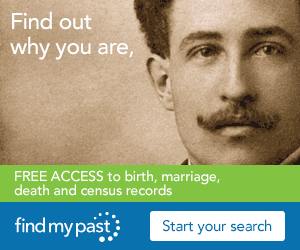by Lisa Cooke | Jan 13, 2017 | 01 What's New, Church, Records & databases |
Special thanks to the New England Historic Genealogical Society and the Archdiocese of Boston for their effort to make Sacramental records for genealogy available online. These and other new and updated genealogical collections are mentioned in this weeks list from the United States, Ireland, United Kingdom, Italy, and free record searches at Findmypast!
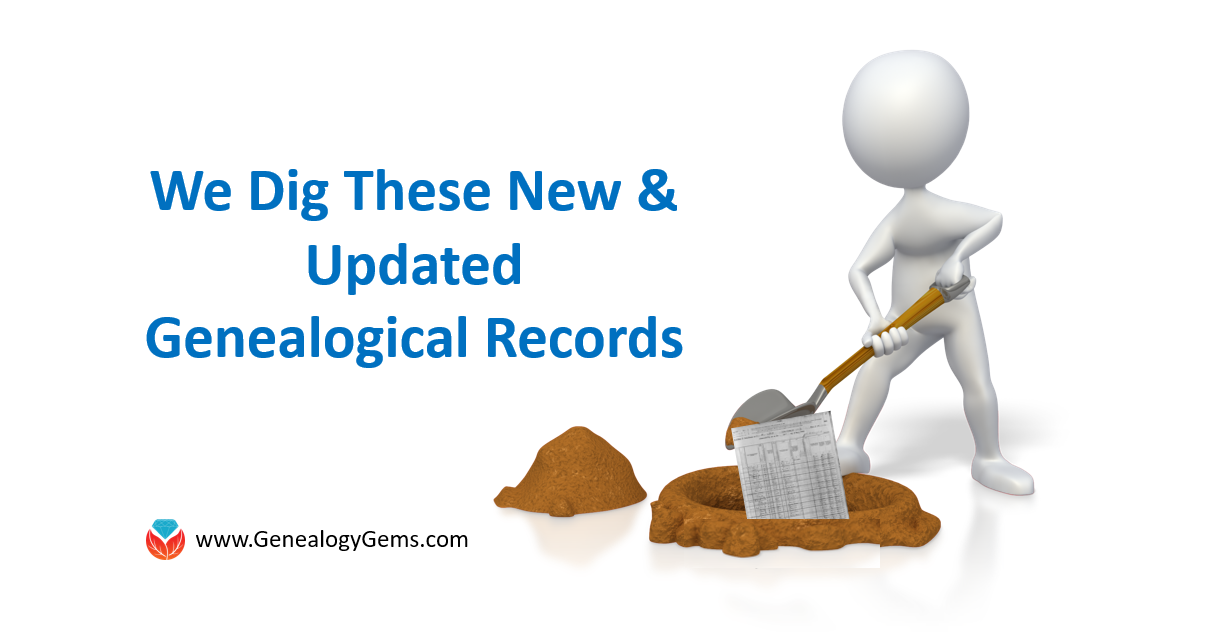
United States (New England area) & Canada – Sacramental Records for Genealogy
NEHGS has announced the New England Historic Genealogical Society (NEHGS) and Archdiocese of Boston have made millions of 18th and 19th century sacramental records searchable online.
The records, which document baptisms, confirmations, marriages, and other sacraments, cover more than 150 parishes from throughout eastern Massachusetts. They also hold records that were carried out in other locations in New England and parts of Canada.
These detailed documents are a critical resource for researchers, historians, and genealogists, especially when secular records are unavailable. They record important moments in the lives of the individuals, families, and communities.
Though the fully searchable data will not be available immediately, anyone can browse images of parish records as they are completed. Click here to learn
how to browse records.
United States – Oklahoma- Vital Records
Ok2Explore is a free searchable index of births and deaths that occurred in the state of Oklahoma. Only limited information is available for births occurring more than 20 years ago and deaths occurring more than 5 years ago.
Visitors to the site may search the index using any combination of the subject’s name, date of event (birth or death,) county of event, and sex of the subject.
Remember this is only an index version of the record, but you can order certified copies for a fee.
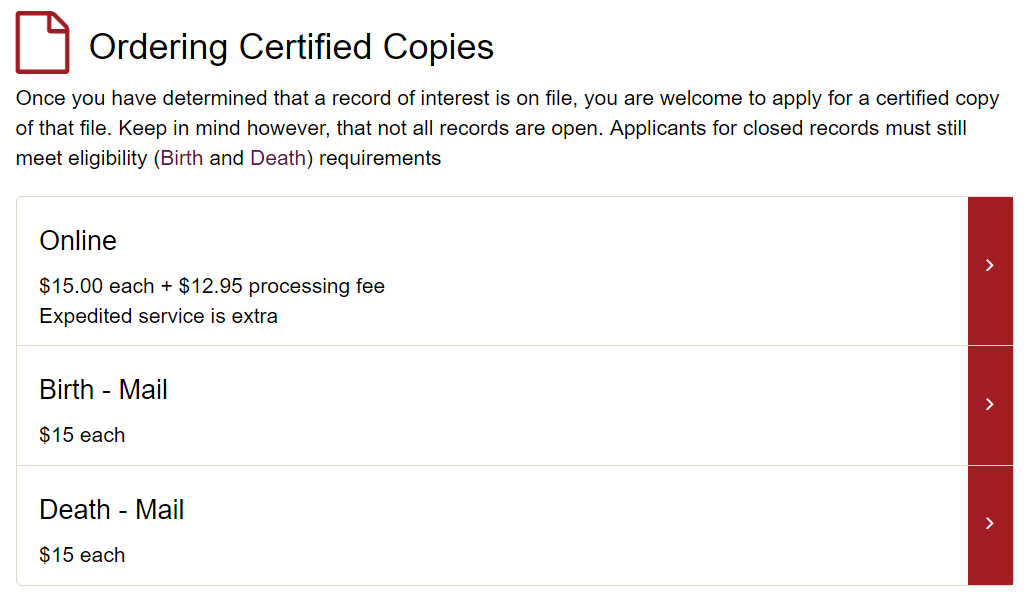
Ireland – Petty Sessions
New and updated genealogical collections this week include the Ireland, Petty Sessions Court Registers at Findmypast.
With over 227,700 new records, the petty sessions handled the bulk of lesser criminal and civil legal proceedings in Ireland. Ireland, Petty Sessions Court Registers now contains over 22.8 million records and is the largest collection of Irish court & prison records available anywhere online. Each record includes a transcript and a scanned image of the original document. These documents will include details of victims, witnesses and the accused, such as an address, date in court, details of the offence, details of the verdict, and the sentence.
Cases range from merchants who had not paid duty on their goods, to workers suing for unpaid wages. Farmers were sometimes fined for letting their cattle wander or for allowing their cart to be driven without their name painted on the side. Public drunkenness was a common offence, as was assault and general rowdiness. Though these records are not considered typical for finding vital information, they can work as great clues to lead you to the information you need.
United Kingdom – Dorset – Memorial Inscriptions
The Dorset Memorial Inscriptions collection at Findmypast contains over 40,000 new records. The collection contains details of inscriptions found on gravestones, tombs, monuments and even stained glass windows throughout 266 parishes within English county.
Each record includes a transcript. The information contained varies, however, most will include a combination of birth year, death year, burial date and location, relative’s names, memorial type and notes on the inscription.
United Kingdom – Warwickshire – Burials
Also at Findmypast, over 175,000 new records have been added to the Warwickshire Burials. The entire collection now contains more 1 million records and includes monumental inscriptions from Clifton Road Cemetery in Rugby.
Each record includes a transcript of the original burial registry or details from the monumental inscription. While the information listed will vary depending on the records original source, most will include your ancestor’s name, age, birth year, death date, burial year, burial location and the name of the officiating minister. A number of records will also include parent’s names and residence. Inscriptions will include information recorded on the individual’s grave stone and will usually include the name of the individual’s spouse, children and/or parents. Also, some grave sites may have more than one person buried in the same plot.
United Kingdom – Northumberland & Durham – Monumental Inscriptions
Over 16,000 records for the Northumberland & Durham Monumental Inscriptions at Findmypast are now available. These include the full description found on a grave stone or monument which will often include additional family names and dates.
Each record includes a transcript of the original source material. The amount of information may vary due to the age and legibility of individual monuments, but most records will include birth date, burial year, burial place, death date, denomination, inscription, and even the type of stone their monument was made from.
Ireland – Quaker Congregational Records
Also at Findmypast, Ireland, Society Of Friends (Quaker) Congregational Records has been updated with an additional 5,000 congregational records. Congregational records include details of the meetings your ancestor’s attended and the activities they engaged in. This is a nice way to enrich your family story.
These records, dating back to the mid-1600s, include minutes from half-yearly Quaker meetings. Each entry includes an image of the original handwritten record. The information included will vary, but most will include the congregation date, address, meeting, archive and reference.
MyHeritage Year End Review
MyHeritage had some pretty exciting things going on in 2016. In their recent blog post, “A Look Back at 2016,” you will see the list including the MyHeritage mobile app, the introduction of Tribal Quest, the debut of the beautiful Sun Chart, and their recent announcement of MyHeritage DNA, just to name a few. Visit the blog post to see the MyHeritage year-in-review for yourself!
Venezuela – Australia – El Salvador – Philippines – Netherlands – Canada – Spain – Slovenia – U. S. – Italy
FamilySearch.org took a short break over the holidays from updating their collections, but with the start of the new year, they have added and updated over 20 collections from all over the world! Check out these great records:
| Venezuela, Diocese of San Cristóbal, Catholic Church Records, 1601-1962 |
688,577 |
*09 Jan 2017 |
| Australia, Queensland, Immigration indexes, 1864-1940 |
64,508 |
*09 Jan 2017 |
| El Salvador Civil Registration, 1704-1990 |
832,749 |
*06 Jan 2017 |
| Philippines, Manila, Civil Registration, 1899-1984 |
2,847,720 |
*06 Jan 2017 |
| Netherlands, Archival Indexes, Miscellaneous Records |
1,254,022 |
*06 Jan 2017 |
| Canada Census, 1901 |
5,343,565 |
*06 Jan 2017 |
| Spain, Soldier Personal Service Files, 1835-1940 |
1,687 |
*06 Jan 2017 |
| BillionGraves Index |
20,128,469 |
*06 Jan 2017 |
| Slovenia, Ljubljana, Funeral Accounts, 1937-1970 |
5,664 |
*06 Jan 2017 |
| Massachusetts, Town Clerk, Vital and Town Records, 1626-2001 |
2,608,950 |
*05 Jan 2017 |
| Italy, Rieti, Civil Registration (State Archive), 1840-1945 |
134,767 |
*05 Jan 2017 |
| Indiana Marriages, 1811-2007 |
3,311,060 |
*05 Jan 2017 |
| Italy, Enna, Civil Registration (State Archive), 1866-1944 |
131,581 |
*05 Jan 2017 |
| Italy, Reggio Calabria, Civil Registration (State Archive), 1784-1943 |
108,208 |
*05 Jan 2017 |
| Italy, Trapani, Civil Registration (State Archive), 1906-1928 |
105,264 |
*05 Jan 2017 |
| Italy, Pescara, Civil Registration (State Archive), 1809-1929 |
385,939 |
*05 Jan 2017 |
| Italy, Cremona, Civil Registration (State Archive), 1744-1942 |
425,374 |
*05 Jan 2017 |
| Italy, Bergamo, Civil Registration (State Archive), 1866-1901 |
629,035 |
*05 Jan 2017 |
| Italy, Caltanissetta, Civil Registration (State Archive), 1820-1935 |
403,003 |
*05 Jan 2017 |
| Italy, Napoli, Civil Registration (State Archive), 1809-1865 |
633,646 |
*05 Jan 2017 |
| Italy, Taranto, Civil Registration (State Archive), 1809-1926 |
272,929 |
*05 Jan 2017 |
| Oklahoma, School Records, 1895-1936 |
90,841 |
*04 Jan 2017 |
Free Record Searches at Findmypast
Findmypast is offering a free records search weekend from January 12 – 15th, 2017. Don’t miss this amazing opportunity!
For records in the United Kingdom, click here.
For records in the US, click here.
For records in Ireland, click here.
For records in Australia, click here.
by Lisa Cooke | Sep 17, 2019 | 01 What's New, Records & databases
If there’s one thing we want to see coming online every single day, it’s new digitized genealogy records! A genealogical brick wall that has been sitting dormant for years can be broken down if just the right records becomes available. And we never know when that will happen.
This week I’m sharing some of the genealogy records that have come online in the last few weeks. These records comes from across the United States. They include wills and probate, police and mug shots, and cemetery records. Perhaps your ancestor’s record is among them.
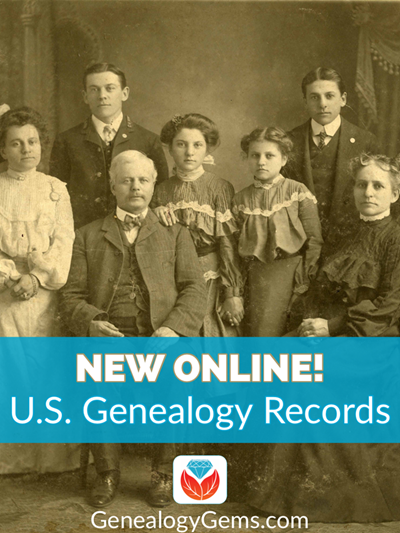
Wills and Probate Records
Do you have ancestors’ from Maryland? Search this collection of Wills and Probates at Findmypast to find out the date of their Will.
As confirmed in the introduction of the publication, the Maryland Calendar of Wills was compiled in response to an already “long existent and steadily increasing need for such work, a need not only of genealogists, nor only for Marylanders now living in the State, but also for the large class of persons, whose ancestors are to be numbered among the men and women who took part in the nation-building as begun on Maryland shores, and whose descendants are now to be found in every State of the Union.”
Each record is available in a PDF format. Use the previous and next buttons at the top of the page to browse through the publication.
The General Index of Wills of St. Mary’s County, Maryland, 1633 to 1900 was compiled by Margaret Roberts Hodges from original indices, the collection of records were published by the Carter Braxton Chapter of the Daughters of the American Revolution.
You can also Search this index to more than 107,000 probate records from Maryland between 1634 to 1777 for transcripts and images of both Prerogative Court and County records. The amount of information listed in each record will vary but looking at images is always recommended.
Preceding the implementation of the first Maryland State Constitution in 1777, two sets of probate records were maintained, probate business was conducted at the capital by the central agency which, for most of the Colonial period, was known as the Prerogative Court.
The Commissary General was the presiding officer of the court and a Deputy Commissary was then appointed for each county. The Deputy Commissary recorded each probate record that was brought into their office, periodically they would send the papers filed in their office to the Prerogative Court where they would be recorded again.
Mugs Shots and More Going Back 150 Years
Records from the Indianapolis Fire Department and the Indianapolis Metropolitan Police Department have been digitized and are available online.
Thanks to a $1.8 million grant from the Lilly Endowment, The Central Library in Indianapolis recently unveiled the collection, which includes some items dating back 150-years.
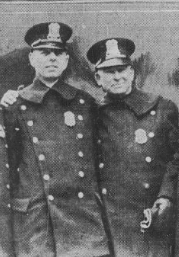
The items have been added to an existing collection of from the Indianapolis Firefighters Museum and include:
- log books,
- dispatch recordings,
- personnel records,
- newsletters,
- historical photos and
- prisoner mug shots
IMPD Deputy Chief Michael Spears said “The City of Indianapolis has a police department of which it can be extremely proud. This collection is the most complete and definitive collection of documents, photographs, videos and other exhibits ever compiled.”
“The Indianapolis Fire Department has a rich and proud 160-year history, and through our partnership with the Indianapolis Public Library, we are preserving that history for future generations,” said Tom Hanify, Professional Firefighters Union of Indiana President.
You can search this unique collection for free at http://www.digitalindy.org/ If you have family history rooted in the Indianapolis area, you’re in for a treat because the website include a wide range of historical content!
118,000+ New Cemetery Records Added
From Internment.com: Interment.net added 118,768 new cemetery records since our last report (January 2018), covering 49 cemeteries across 14 states.
Interment.net is one the oldest and largest archives of cemetery transcriptions, since 1997, and is still committed to serving genealogists at no cost.
Contained on our website are tens of millions of records, covering tens of thousands of cemeteries, from across the world.
Our records are obtained from databases direct from cemeteries, churches, libraries, and government offices, as well as from complete works of tombstone transcriptions.
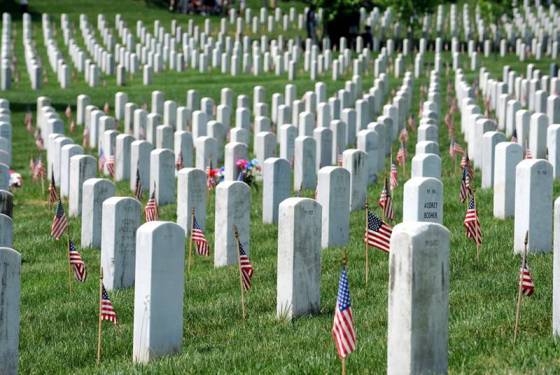
Here’s the list of cemetery records published recently:
Quebec, Canada
Brome County, Saint-Cajetan Cemetery, Mansonville, 722 records
Arthabaska County, Lorne Cemetery, Kingsley Station, 63 records
Arthabaska County, Trout Brook Cemetery, Tingwick, 127 records
Temiscouata, Cabano Cemetery, Temiscouata-sur-le-Lac, 2,117 records
Ontario, Canada
Bruce County, Culross and Teeswater Cemetery, Teeswater, 2,268 records
Ireland
County Wexford, Ballyhuskard Graveyard, Ballynastraw, 120 records
Alaska
Ketchikan Gateway Borough, Bayview Cemetery, Ketchikan, 5,291 records
Arizona
Apache County, St. Johns Cemetery, St. Johns, 1,400 records
California
Monterey County, Holy Trinity Cemetery, Greenfield, 500+ records
Monterey County, Oak Park Cemetery, Greenfield, 500+ records
Napa County, Pioneer Cemetery, Calistoga, 950 records
Los Angeles County, Fairmount Cemetery, Azusa, 250 records
Michigan
Genesee County, Garden of Peace Cemetery, Swartz Creek, 56 records
Genesee County, Swartz Creek Cemetery, Swartz Creek, 261 records
Clinton County, Rose Cemetery, Bath Township, 1,442 records
Clinton County, Pleasant Hill Cemetery, Bath Township, 1,806 records
Minnesota
Carver County, Chanhassen Pioneer Cemetery, Chanhassen, 850 records
McLeod County, Oakland Cemetery, Hutchinson, 8,755 records
Anoka County, East Bethel Cemetery, East Bethel, 100 records
Anoka County, Old East Bethel Cemetery, East Bethel, 178 records
Anoka County, Oak Leaf Cemetery, East Bethel, 650 records
Missouri
New Madrid County, Evergreen Cemetery, New Madrid, 2,500 records (approx)
New Madrid County, Davis Cemetery, Kewanee, 14 records
New Madrid County, East Side Cemetery, New Madrid, 128 records
New Madrid County, Cedar Grove Cemetery, New Madrid Township, 25 records
New Madrid County, A.C. LaForge Cemetery, New Madrid Township, 4 records
New Madrid County, Augustine Cemetery, New Madrid, 2 records
New Madrid County, Byrne-Howard Cemetery, New Madrid, 32 records
St. Louis County, Eberwein Family Cemetery, Chesterfield, 9 records
St. Louis County, Harugari Cemetery, Manchester, 21 records
St. Louis County, St. Mary’s Cemetery, Hazelwood, 1,071 records
St. Louis County, St. Monica Cemetery, Creve Coeur, 801 records
St. Louis County, St. Peter Cemetery, Kirkwood, 3,589 records
St. Louis County, St. Ferdinand Cemetery, Hazelwood, 3,426 records
St. Charles County, Ste. Philippine Cimetiere, St. Charles, 369 records
Jefferson County, St. Vincent Cemetery, Fenton, 33 records
Nebraska
Scotts Bluff County, East Lawn Cemetery, Mintare, 1,900 records
New York
Allegany County, Mount Pleasant Cemetery, Houghton, 724 records
Allegany County, Caneadea Cemetery, Caneadea, 430 records
Allegany County, East Caneadea Cemetery, Caneadea, 102 records
North Carolina
Nash County, Rocky Mount Memorial Park, Rocky Mount, 4,192 records
Ohio
Montgomery County, Happy Corner Cemetery, Englewood, 600 records
Oklahoma
Comanche County, Ft. Sill National Cemetery, Elgin, 6,093 records
Pennsylvania
Elk County, Denison Family Cemetery, Jay Township, 3 records
South Carolina
Anderson County, M. J. “Dolly” Cooper Veterans Cemetery, Anderson, 2,811 records
Richland County, Fort Jackson National Cemetery, Columbia, 5,548 records
Tennessee
Lawrence County, Richardson Cemetery, Centerpoint, 55 records
Texas
Swisher County, Rose Hill Cemetery, Tulia, 6,107 records
Hays County, San Marcos City Cemetery, 6,391 records
Washington State
King County, St. Patrick’s Cemetery, Kent, 760 records
Cowlitz County, Longview Memorial Park, Longview, 17,335 records
Kittitas County, Cacciatori D’Africa Cemetery, Roslyn, 25 records
Klickitat County, Stonehenge WWI Memorial, Maryhill, 14 records
Wisconsin
Marinette County, Forest Home Cemetery, Marinette, 22,800 records
Marinette County, Calvary Cemetery, Marinette, 48 records
Marinette County, Woodlawn Cemetery, Marinette, 2,400 records
Search these records at Interment.net.
Military
The Department of Veterans Affairs and National Cemetery Administration has created a new platform that creates digital memorials for all veterans in national cemeteries.
According to the website, the Veterans Legacy Memorial is “an online memorial space for Veterans managed by the National Cemetery Administration (NCA) of the U.S. Department of Veterans Affairs (VA). NCA manages 136 national cemeteries as shrine spaces to honor our Nation’s Veterans and extends memorialization of the 3.7 million Veterans interred in NCA cemeteries to this digital memorial space, providing a VLM profile page for each.
To find the memorial profile of a Veteran, please enter the name of your Veteran in the format of First Last with no commas (“John Doe” not “Doe, John”). To search with additional information (branch of service, cemetery name, etc.), please click on Advanced Search.”
Visit and search the Veterans Legacy Memorial here.
More Genealogy Records Coming Next Week
We report on the newest genealogy records that have come online each week. Subscribe to the free Genealogy Gems newsletter here to get notification, and you’ll also received my free ebook on googling search strategies for genealogy.


